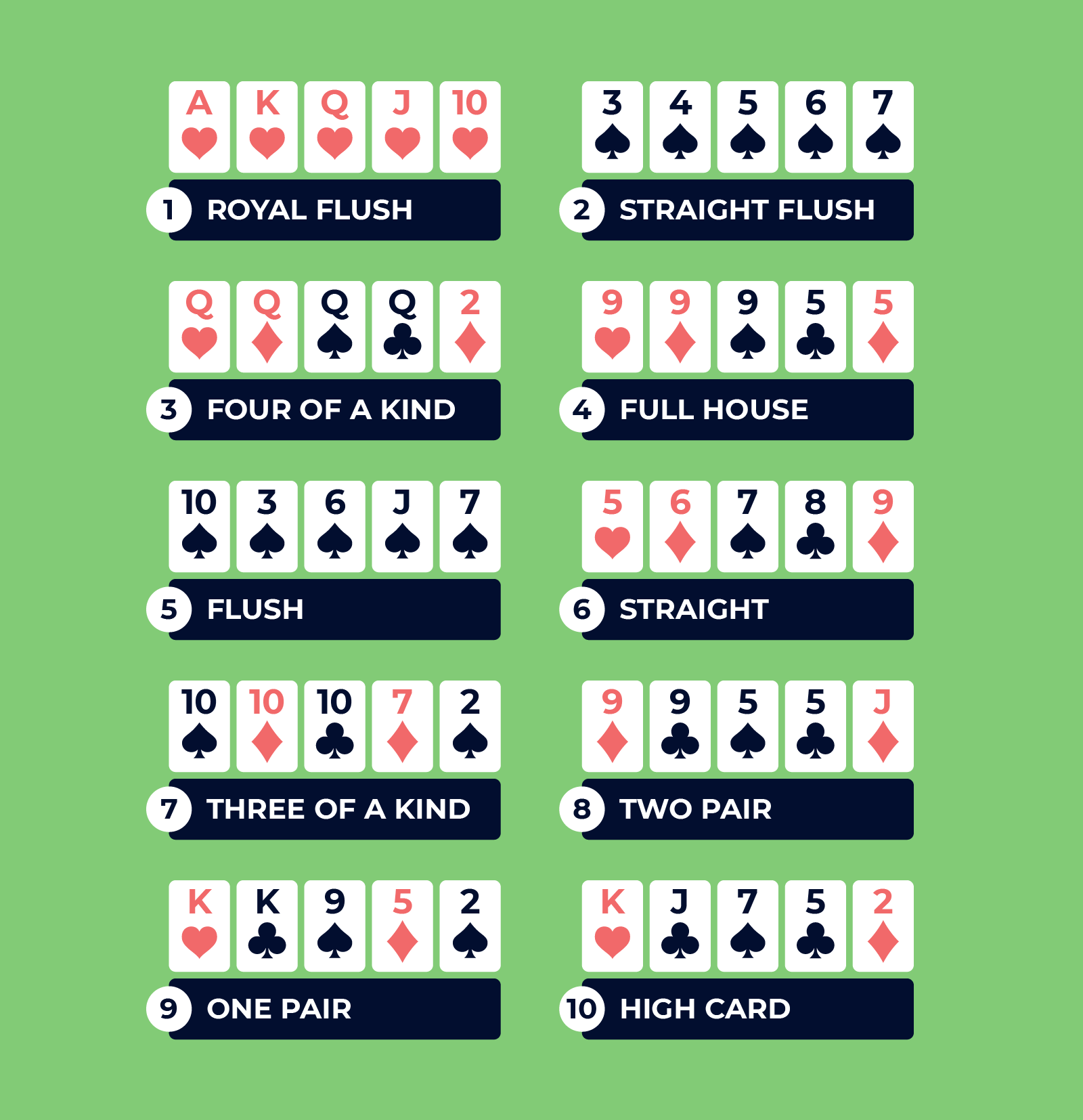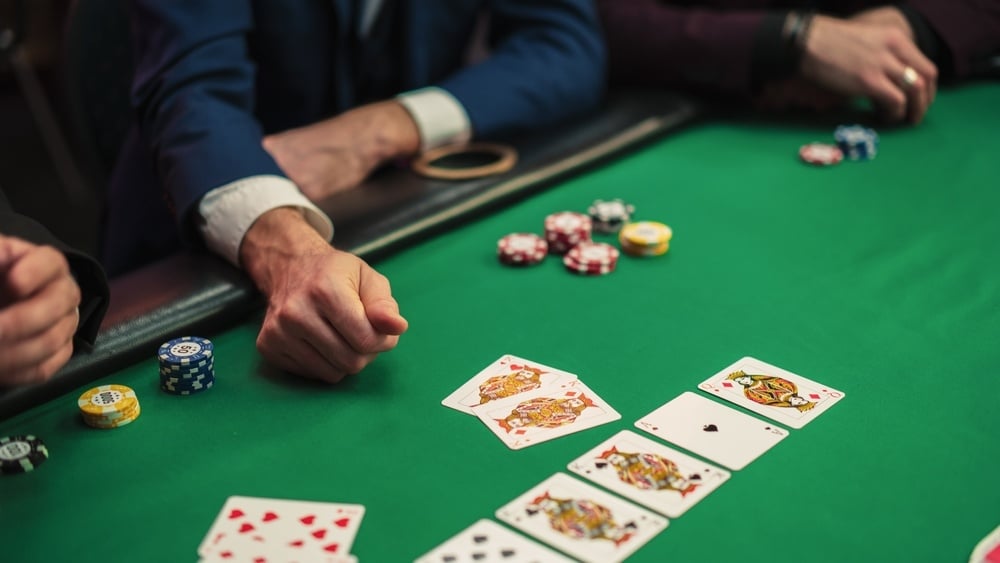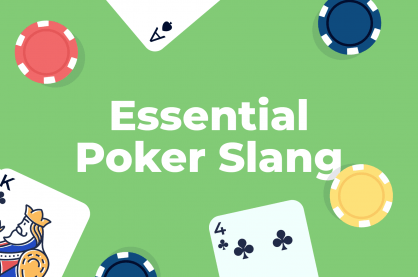What Is Pai Gow Poker? Your Ultimate Playbook
If you’re looking to learn how to play Pai Gow poker, you’re in luck — it’s much simpler than forms of poker like Texas Hold’em and Omaha.
Here are the quick essentials:
- Pai Gow poker used the traditional poker hand ranking system.
- Pai Gow poker is played with a 53-card deck rather than 52-card — it includes one joker!
- Players compete against the dealer or ‘banker’ rather than each other.
As you can see, Pai Gow is a fun game to play against ‘the House’ — you aren’t trying to take money away from other players! The rush comes from winning money against the casino.
Here are the poker hand rankings in case you need an easy reference cheat sheet:
Pai Gow Poker Hand Rankings
1. Royal Flush: A, K, Q, J, 10, all of the same suit.
2. Straight Flush: Five consecutive cards of the same suit.
3. Four of a Kind: Four cards of the same rank.
4. Full House: Three of a kind combined with a pair.
5. Flush: Five cards of the same suit, not in sequence.
6. Straight: Five consecutive cards of different suits.
7. Three of a Kind: Three cards of the same rank.
8. Two Pair: Two pairs of cards of the same rank.
9. One Pair: Two cards of the same rank.
10. High Card: The highest card if no other hand is made.

How Is The Joker Used In Pai Gow?
“But what about the joker?” you may ask. How does he come into play with the Pai Gow hand rankings?
In Pai Gow Poker, the joker can be used in a few different ways:
- Ace: When used alone, the joker can be an ace.
- Wild: In straights, flushes, and straight flushes, the joker can be wild and used as any card in the deck. For example, when used to complete a flush, the joker represents the highest value card that’s not already in the hand.
- Complete a straight or flush: The joker can be used to complete a straight or flush in the backhand, or five-card hand.
What this means is that the joker serves as a special conditional wildcard. You can’t use him to play just any card, but rather a completion card. Or, again, alone simply as an ace. His appearance naturally makes it easier to achieve a high hand ranking, and, if utilized correctly, can significantly increase your Pai Gow poker payouts.
NOTE: Certain card rooms and casinos have their own deviations of these Pai Gow poker rules. They can definitely vary, so make sure to check with wherever you plan on playing.
Pai Gow Poker Rules
Let’s explore how to play Pai Gow poker in detail. In this game, up to six players face off against the dealer or banker, whom we’ll consistently refer to as the dealer.
Each player — including the dealer — receives seven cards. These seven cards are used to form two separate hands, hence why Pai Gow poker is also alternatively known as ‘Double Hand Poker’. One hand is designated as the ‘high hand’ and the other as the ‘low hand’.
The high hand must be stronger than the low hand.
For instance, if your low hand is a pair of Kings, your high hand must be at least a pair of Aces or higher, such as two pairs or better holdings.
- The high hand must be made-up of five cards.
- The low hand must be made-up of two cards.
Because of this, the low hand will always be a pair or two high-ranking cards.
If the rare situation arises where the high hand is not stronger than the low hand, the player is considered to have ‘miss-set’ their hand. This results in a foul and an automatic loss! Make sure to be careful when you’re new to the game and refer to the above Pai Gow poker hand rankings as needed.
Most casinos will allow you to bring your own print-out or electronic guide for easy reference, as this doesn’t give you an edge over the casino and you’re not competing against other players. Be gentle with yourself as you master the Pai Gow poker rules and do not play in settings that make you uncomfortable. This includes table limits.
Next in understanding the Pai Gow poker rules comes betting — each table has their own minimums and maximums. These min/max limits will determine the size of the game, meaning how much you can win or lose at a time. As stated, stick to table stakes you can afford.
If both your 5-card hand and your 2-card hand beat the dealer’s hands, you win the round and collect double the bet you placed. If both of your hands lose to the dealer’s hands, you lose your bet, and the dealer adds it to their bank. If you win one hand and the dealer wins the other, the round ends in a “push,” where there is no winner, your bet is returned, and the game moves on to the next round. Pushes are very common.
Naturally the goal is to be the net winner.
As a recap, these are the three outcomes:
- Win = collect double your bet.
- Lose = dealer takes your bet.
- Push = your bet is returned, but the House still takes a commission.
Step-by-Step Gameplay
Here’s how Pai Gow poker gameplay begins:
- Before the cards are dealt, each player places their bet.
- Seven cards are dealt face down to each player.
- Players rearrange their cards into a high hand and a low hand.
- The dealer reveals their seven cards face up and arranges them into a high hand and a low hand.
- To win a round, both your high hand and low hand must be better than the dealer’s high hand and low hand.
On a casino Pai Gow table, you will typically see the letters “H” and “L” indicating where to place your high and low hands. This makes it easy to see who wins.
A time where the winner may seem less clear is when the player and dealer have identical hands. The result is that the dealer wins! They will claim the bet, tragically.

Lead image credit: Kitreel/Shutterstock
Pai Gow Poker Odds
Be aware that this is a typical gambling casino game — the Pai Gow poker odds are not in your favor. The House edge may seem small but it’s not insignificant. It is impossible to tip the Pai Gow poker odds in your favor.
- For every push, the casino usually takes a 5% ‘commission’ or rake.
- If a player holds the same hand as the dealer, the dealer wins.
- Pai Gow has a lower House edge than double-zero roulette, but higher than baccarat.
The house edge in Pai Gow poker is estimated to be between 2% and 3%. For comparison, the house edge on a double-zero roulette wheel is over 5%, while a single-zero roulette wheel has a house edge of about 2.7% — similar to Pai Gow poker payouts.
The standard baccarat house edge is close to a low 1% making it theoretically nearer to breakeven, but you’d be surprised how much money people can lose even at a 1% disadvantage because it compounds over time.
You can improve your odds slightly by playing as the banker because you win in the case of a tie. Casinos typically offer players the opportunity to act as the banker, which is a better mathematical proposition, even though you absorb greater financial risk. Still, the overall odds remain unfavorable due to the game’s inherent house edge.
Pai Gow Poker Strategy
While the overall odds of winning in the long run may be a deterrent, there are still strategic ways to play more effectively in the short term.
Hand Setting Strategy:
- High Hand Priority: Always prioritize setting a strong high hand. This is crucial because the high hand must beat the dealer’s high hand to win the bet.
- Low Hand Strategy: The low hand should be strong enough to ensure a better chance of winning one hand if splitting with the dealer. Aim for a pair of high-ranking cards or a low pair.
Splitting Pairs:
- Optimal Pair Splitting: When dealt pairs, strategize to split them between the high and low hands effectively. For instance, with a pair of Aces, place one Ace in the low hand and the other in the high hand to maximize both hands’ strength.
Managing Joker Strategy:
- Utilizing the Joker: If dealt a Joker, consider it as an Ace unless it can complete a straight or flush in the high hand. In the low hand, the Joker can be beneficial in completing a flush or straight, but ensure it’s used wisely to avoid weakening the high hand.
Banking Strategies:
- Advantages of Banking: Opt to be the banker whenever possible. While it requires a larger bankroll, being the banker gives you a slight statistical advantage due to winning ties. But you must manage your bankroll effectively to withstand potential losses when playing as the banker.
Understanding House Edge:
- House Edge Awareness: Recognize that Pai Gow Poker typically carries a house edge of around 2% to 3%, which is lower than many other casino games like double-zero roulette or slots. However, this edge can impact long-term profitability, so play with a strategic mindset to mitigate losses. This means recognizing when it’s time to walk away — if you’ve won, you’ve already defied the odds. Take the money and run!
Before wagering real money, you can learn how to play Pai Gow poker by practicing online or in free-play modes offered by some casinos. This allows you to familiarize yourself with hand setting, strategies, and the flow of the game without financial risk.
Pai Gow Perfection: Wrapping Up Your Play Guide
Pai Gow poker demands a blend of skill and good grasp of probabilities. By mastering Pai Gow poker strategy and understanding the game’s nuances, you can significantly improve your chances of success. Remember, while luck plays a role, a well-thought-out strategy can tilt the odds closer to your favor… although the House still always wins!
If you’d like to grow your Pai Gow poker skills, or just your poker skills in general, check out the articles below. Packed with tips and tricks from poker experts, they’ll have you on the high-rollers table in no time!
- Understanding Poker Table Positions (And Why They Are SO Important!)
- Understanding All-In Poker Rules: When & Why You Should Go All-In
- What Is A Straddle In Poker & When Shouldn’t You Do It?
- How To Play Like A Pro: Easy Poker Cheat Sheets For Beginners
Lead image credit: Victor Moussa/Shutterstock


